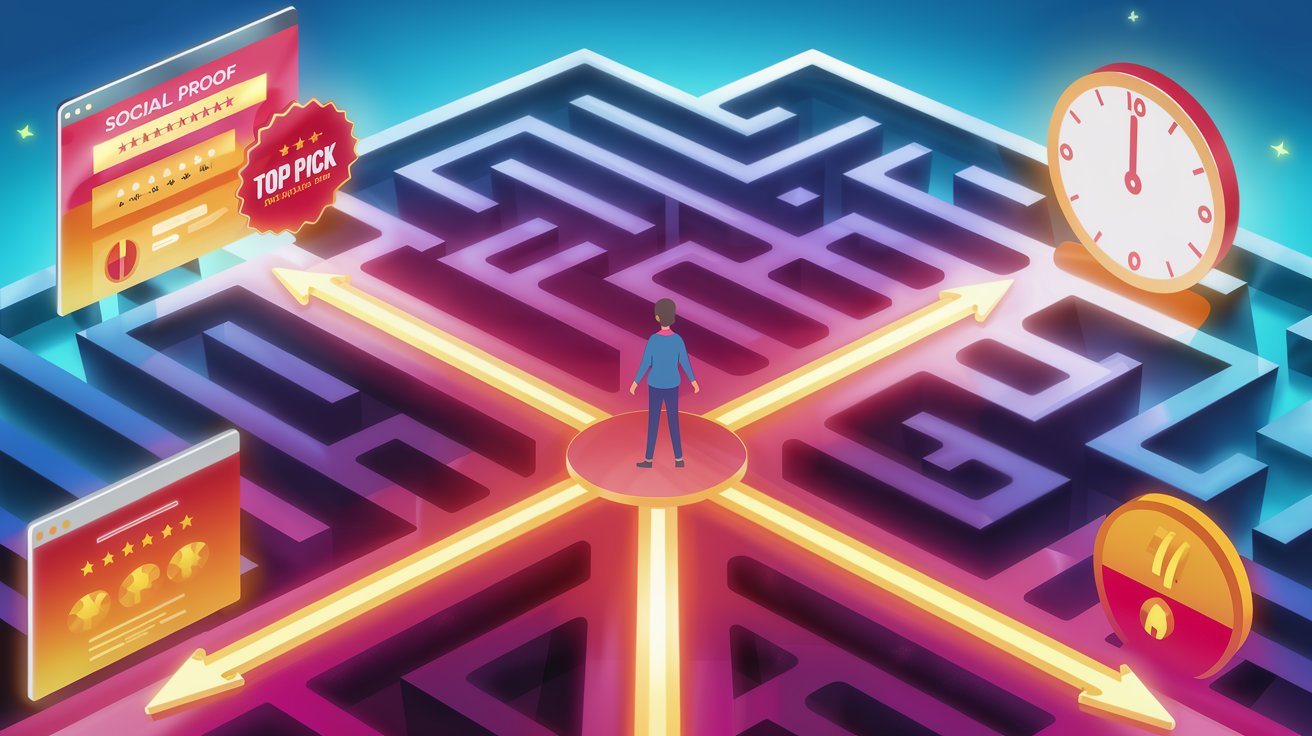Every click, every purchase, every subscription—behind each of these actions lies a decision. For marketers, understanding why people make the decisions they do is like unlocking a secret vault of opportunities. The key to that vault? Psychology. Let’s peel back the layers of the human mind and uncover how decision-making works—and how you, as a savvy marketer, can steer those decisions with confidence, creativity, and strategy.
The Basics of Decision-Making Psychology
Decision-making might seem straightforward: weigh the pros and cons, pick the best option, job done. Right? Wrong. The human brain is a buzzing hive of biases, shortcuts, and emotions that guide decisions faster than you can say “conversion rate.”
Fast vs. Slow Thinking: The Two Systems
In his groundbreaking book Thinking, Fast and Slow, Daniel Kahneman introduced us to two modes of thought:
- System 1: The Speed Demon
Quick, instinctive, and emotional—this system handles most of our day-to-day decisions.
Example: Clicking “Buy Now” because it’s the last item in stock. - System 2: The Deliberator
Slow, analytical, and logical—this system steps in for complex decisions.
Example: Researching laptops for weeks before committing to a purchase.
For marketers, the goal is to craft campaigns that appeal to System 1’s snap judgments and System 2’s careful reasoning.
Emotional Drivers in Decision-Making
Emotions aren’t just passengers on the decision-making journey—they’re often behind the wheel. Tap into the right feelings, and you’ll create irresistible campaigns that move people to action.
1. Fear of Missing Out (FOMO)
Humans hate losing out. Whether it’s a limited-time offer or an exclusive deal, FOMO triggers System 1 into action.
Example: “Only 3 seats left for our webinar—register now!”
2. The Joy Factor
Joy is infectious. Campaigns that evoke happiness—through humour, nostalgia, or positivity—are more likely to stick.
Example: Think Coca-Cola’s “Open Happiness” campaign.
3. Trust and Belonging
Humans are tribal by nature. We’re drawn to brands that make us feel included and valued. Building trust through testimonials, reviews, and transparent communication can influence even the most hesitant buyers.
Cognitive Biases: Your Marketing Power Moves
If emotions are the drivers, cognitive biases are the roadmaps. These mental shortcuts help people process information quickly but often lead to predictable behaviours that marketers can strategically influence.
1. Anchoring Bias
The first piece of information someone sees (the “anchor”) heavily influences their decision.
Marketing Hack: Show a higher-priced option first, making the following options seem like better deals.
2. The Bandwagon Effect
People love following the crowd. When others rave about a product or service, it’s hard to resist jumping on board.
Marketing Hack: Showcase customer reviews, user stats, or social proof like “10,000+ happy customers.”
3. The Decoy Effect
Presenting a third, less attractive option can nudge people toward your desired choice.
Marketing Hack: Offer a mid-tier subscription plan that looks like a sweet spot between “basic” and “premium.”
How to Influence Decision-Making with Behavioural Psychology
Let’s get into the nitty-gritty. Here’s how to craft campaigns that speak directly to your audience’s brains:
1. Simplify the Path to Action
Decision fatigue is real. The more steps, the more likely people are to drop off. Keep your CTAs (calls-to-action) clear, bold, and easy to follow.
Pro Tip: Use action verbs like “Discover,” “Join,” or “Start.”
2. Use Visual Hierarchy
The brain processes visuals faster than text. Use bold headings, contrasting colours, and eye-catching imagery to guide attention where you want it.
Example: Place your CTA button in a bright colour that contrasts with the rest of your page.
3. Personalisation Is Power
Tailored experiences make people feel seen. Use data to craft hyper-relevant messaging.
Example: “Hey [Name], we think you’ll love these picks based on your recent searches.”
4. Create a Sense of Urgency
Time limits or scarcity can light a fire under even the most indecisive buyers.
Example: “Hurry! Offer ends at midnight.”
Real-World Examples of Psychology in Marketing
Amazon’s “Frequently Bought Together”
This feature capitalises on the bandwagon effect and social proof. If others are buying these items together, they must be worth it, right?
Apple’s Product Launches
Apple nails FOMO and scarcity. By limiting initial product stock and hyping new releases, they create a frenzy of eager buyers.
Nike’s “Just Do It”
This slogan appeals to emotions—particularly ambition and determination—while its campaigns showcase relatable role models, building trust and belonging.
Common Pitfalls to Avoid
Even with psychology on your side, mistakes can derail your campaigns. Watch out for:
- Overwhelming Choices: Too many options can paralyse decision-making. Keep it simple.
- Mismatched Messaging: If your tone doesn’t align with your audience’s expectations, you’ll lose their trust.
- Neglecting Data: Gut instincts are great, but data-driven insights are better.
The Future of Psychology in Marketing
As technology advances, marketers can leverage AI, machine learning, and predictive analytics to create even more personalised and psychologically attuned campaigns. Think chatbots that predict your mood or AR experiences that trigger joy and curiosity.
Final Thoughts
Understanding the psychology of decision-making isn’t just a marketing advantage—it’s your secret weapon for building meaningful, lasting connections with your audience. By tapping into emotions, biases, and behaviours, you can craft campaigns that don’t just convert—they resonate.

